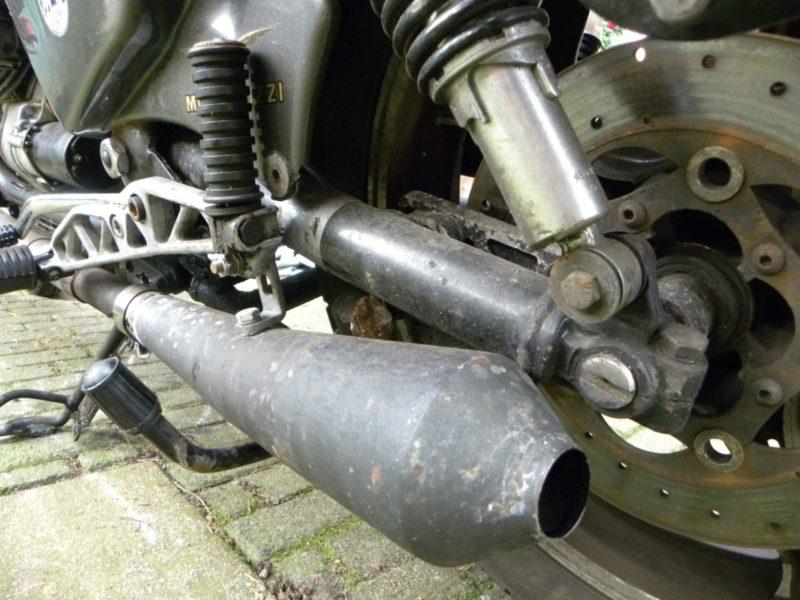Exhaust silencers:
It is not for nothing that what is hanging under our motorcycles is called an explosion engine. The combustion process makes serious noise. And there were also some reservations about and solutions for that in the past. That is why our motorcycles have mufflers. And how effective are they? Oh well, it's just what you want ...
For example, an undamped megaphone on a four-stroke gives a sound that is experienced by many enthusiasts as heavenly.
But those mufflers provide more than damping, they are also important for the breathing of the engine. We list the three basic types of mufflers:
How do mufflers work?
Sound is basically a vibration of air. And those vibrations, in turn, cause differences in air pressure: There are high and low pressure waves. It is the frequency of those waves, so the speed at which they follow each other, that we hear as the pitch. The volume of that pitch is determined by the sound pressure. The more pressure, the more volume. Then we think of cylinder capacity. Compression and cam timing.
Absorption damping
The absorption damper is the type of muffler that is probably best known among motorcyclists, because sport exhausts almost always use this principle. Why? Because this type of damping causes little back pressure, and the flow of exhaust gases is limited as little as possible. And breathing as unobstructed as possible is in principle optimal for performance. In this absorption damper, the exhaust gas flows at a high speed through a perforated tube. Then the sound waves end up in the damping material, which absorbs the sound and does not bounce back. As a result, the main sound wave in the main pipe loses even more pressure and sound intensity.
Reflection damping
However, the simplest form of damping takes place by passing the exhaust gas into a pipe in a larger chamber. As a result, the pressure waves lose speed and certain, especially low, frequencies are damped. In addition, the sound waves bounce back and forth in such a room, causing the waves to collide and dampening.
We call this reflection damping. Which frequencies such a room dampens depends on the dimensions of such a room. By placing a number of rooms with different dimensions one behind the other, you can thus attenuate a large number of frequencies. And that is serious calculations.
Resonance attenuation
The resonance damper is a variant of the reflection damper. Here you can also clearly see the rooms, which eliminate certain frequencies. Between the rooms you see pipes with different lengths, which in turn influence the remaining frequencies. This is, very briefly through the bend, a reflection damper +. It is certainly not a sought-after damper, because such a damper is more complex and heavier than the reflection and absorption damper.
However, due to the different chambers and various internal pipe lengths, the frequency range is so wide that the damping is ultimately very effective. This makes it the quietest damper, and therefore often a necessary evil to comply with the necessary regulations.
Mixing is allowed
Of course these are just three basic principles, and in practice a combination is often used to meet certain requirements.
A matter of consideration
For a manufacturer, it is all a matter of weighing the bill because, apart from the sound, weight and production costs naturally also play an important role.




Is there no norm for noise pollution from engines? with cars, this is the case. I think that certain engines do produce a lot of noise.
You may not produce more than… dB per engine, this is stated on your registration certificate
95dB is allowed on my oldtimer from 1971. This is a Yamaha DT1 250MX which I have converted for road use (lighting, horn, mirror, M + S tires). By the way, I haven't come across any 2e in NL yet, it still seems to be the only one here ..
However, that was difficult to achieve. A lot of noise is already coming from the block and the carburetor (not too tight connection of the bend to the block).
I had a damper built up to 2x in order to finally be able to meet the requirement NET. A pity, because I want to drive quietly. Apparently, a roof is only possible if I have a double-walled exhaust built. The current one is only walled. The basis is as long as possible a damper, a damper + reflection chamber behind it turned out to be the solution.